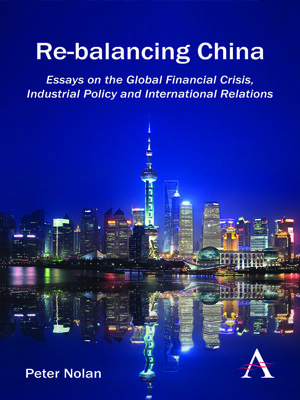Re-balancing China
ebook ∣ Essays on the Global Financial Crisis, Industrial Policy and International Relations
By Peter Nolan

Sign up to save your library
With an OverDrive account, you can save your favorite libraries for at-a-glance information about availability. Find out more about OverDrive accounts.
Find this title in Libby, the library reading app by OverDrive.



Search for a digital library with this title
Title found at these libraries:
| Library Name | Distance |
|---|---|
| Loading... |
'Re-balancing China' addresses three key sets of issues in China's political economy. Part One provides an analysis of the profound effect of the global financial crisis upon China's economy, as well as the positive impact of the massive rescue package that was implemented in response to the crisis. Part Two focuses on the challenge of globalization for China's industrial policy. After more than two decades of industrial policy, China still has a negligible number of large firms that are competitive in global markets. China's experience presents a fundamental challenge to traditional concepts of industrial policy and development. Part Three examines China's international relations – in particular, its relationship with the US and the interactions between the two countries in the East and South China Seas.
|'Re-balancing China' addresses three key sets of issues in China's political economy. Part One of the text provides an analysis of the profound impact of the global financial crisis on China's economy – an economy deeply integrated in the global economic system through trade and foreign investment. It also examines the positive outcomes of the massive rescue package that constituted China's policy response to the crisis. The rescue package stimulated Chinese growth and helped to stabilize the global economy as a whole.
Part Two focuses on the challenge of globalization for China's industrial policy. Since the 1980s, China has pursued an industrial policy aimed at nurturing a substantial group of globally competitive firms, most of which have become superficially successful. However, China still has a negligible number of large firms that are competitive in global markets. China's experience presents a fundamental challenge to traditional concepts of industrial policy and development.
Finally, Part Three examines China's international relations, the focal point of which is its relationship with the United States. The US has made it clear that its principal challenge in international relations is the 'rise of China' and has announced a 'tilt towards the Pacific' in its military strategy. As a result, the core of this interaction spans the East and South China Seas and the countries that surround this area.







